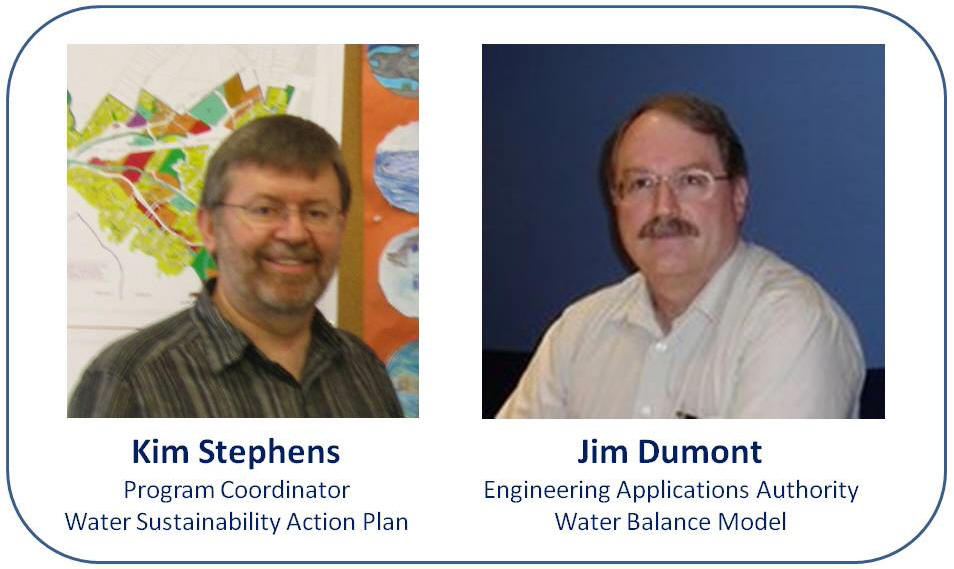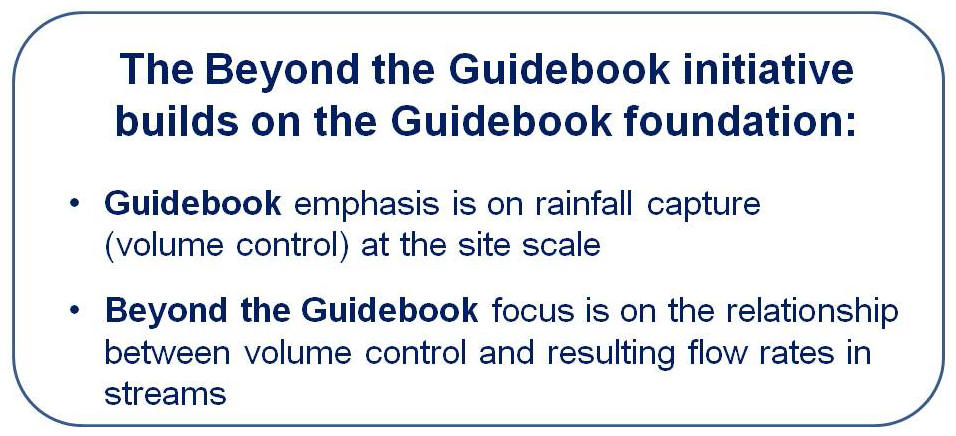University of the Fraser Valley: Jim Dumont introduced students to the science behind the Water Balance Model and demonstrated real-world applications for greening the urban environment and protecting stream health (Nov 2009)
Note to Reader:
Interest in the Water Balance Model for British Columbia on the part of faculty and students at the University of the Fraser Valley led to an invitation to the Inter-Governmental Partnership to contribute content for the Hydrology 303 under-graduate course.

About Hydrology 303
“I have been teaching about the water cycle, water balance components and computations. So the students have a good understanding about hydrologic concepts, equations and computations,” explains Dr. Ineke Kalwij, Sessional Lecturer at the University of the Fraser Valley.
“I have also been teaching about stream characterization using the Rosgen classification system. The students are also learning about open channel hydraulics. The course is hands-on and the students will learn to take flow measurements and analyze the data.”
“The students are particularly interested in how all of what they have learned can be used and/or is used in the real-world. The best way to guarantee a balance between nature and urban development in the future is by teaching future planners and decision-makers today about cutting edge technology for designing with nature.”
“So we were quite pleased when Kim Stephens and Jim Dumont agreed to provide an introduction to the Water Balance Model as part of the curriculum for Hydrology 303. Most of my students are from Third Year Geography, some are pursuing a BA, and some are pursuing a B.Sc. degree. So it is a diverse group.”

Greening the Urban Environment & Protecting Stream Health
Dr. Kalwij describes how the lecture was organized in two parts to reflect the students background and to integrate their knowledge into a coherent package:
- Part 1 involved an exposure to something new to them: the regulatory and administrative side of life. Presented by Kim Stephens, this overview delved into the why of doing many of the things that the students are being exposed to in their hydrology classes.
- Part 2 involved a demonstration of how to integrate all of the technical things they have been shown in class. Presented by Jim Dumont, the emphasis was on the information and techniques that are important in providing solutions and value to society.
Kim Stephens is the Program Coordinator for the Water Sustainability Action Plan for British Columbia, the umbrella initiative for development of the Water Balance Model. An engineer-planner with 36 years experience, he was Project Manager and principal author of Stormwater Planning: A Guidebook for British Columbia, released by the Province in 2002.
Jim Dumont is the Engineering Applications Authority for the Inter-Governmental Partnership. In this role, he is responsible for developing and/or overseeing development of the hydrology applications and stream health methodologies that enhance the Water Balance Model as a scenario modeling and decision support tool for use at the site, neighbourhood and watershed scales.

Beyond the Guidebook
Kim Stephens created the vision for the Water Balance Model as an extension of the Guidebook. Jim Dumont then created the vision for merging the QUALHYMO hydrologic engine with the Water Balance Model user interface as the technical foundation for the Beyond the Guidebook initiative.
About the Water Balance Model
The rapid growth and success of the present second generation of the Water Balance Model has fuelled a level of user interest and need that has made it clear that the time has come for the next bold leap forward in the evolution of this web-based tool.
Links to PowerPoint Presentations
Kim Stephens: Context for the Water Balance Model
Jim Dumont: Applying scientific methods using the WBM]
To Learn More:
Click on 3-year program will enhance the capabilities of the Water Balance Model for Canada.


